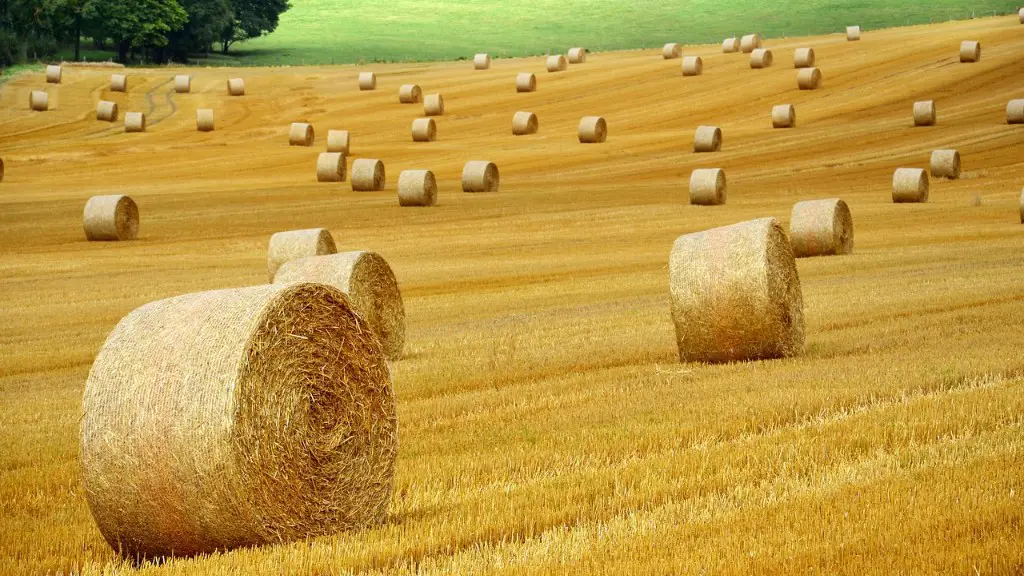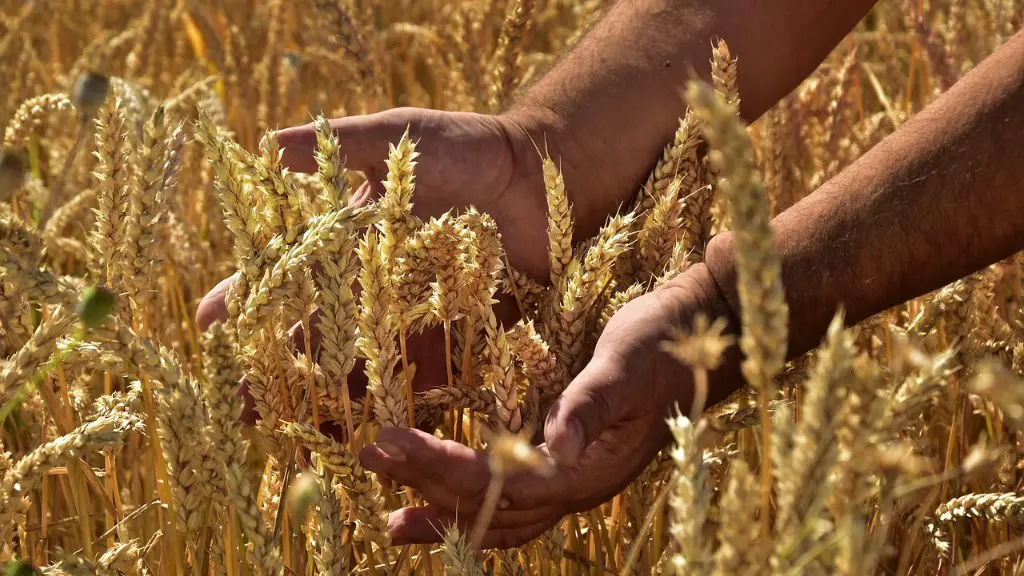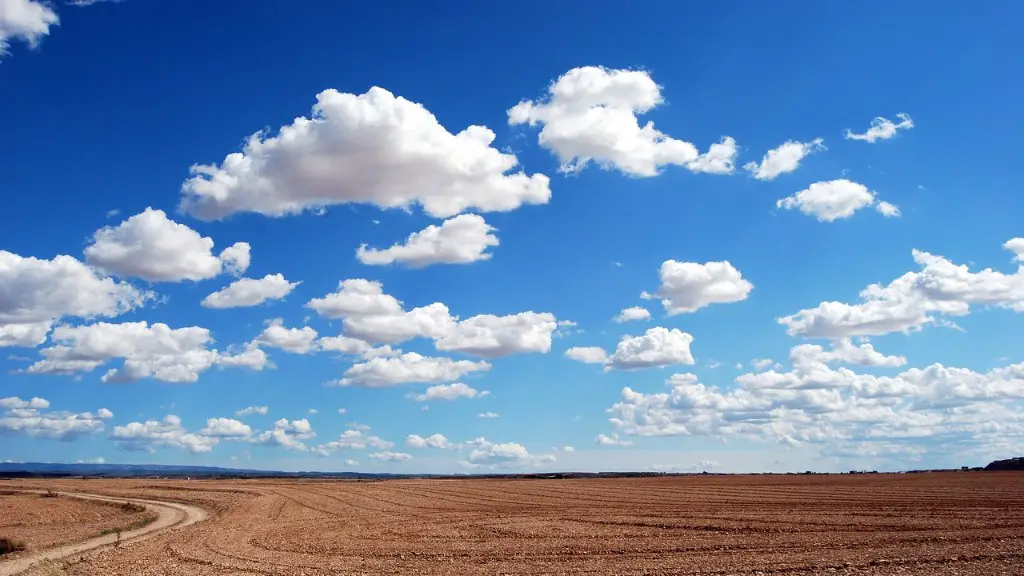The application of science in agriculture is undeniable; it has allowed countries to maximize the productivity of their farms while minimizing the cost of farming by introducing more efficient methods and improved farming technologies. By leveraging science to improve farming, the world has seen an increase in crop yields, improved disease control, and more efficient fertilizer use. This has been made possible through several areas of research and development.
One of the most significant advances has been the development of genetically modified organisms (GMOs), which have allowed farmers to increase crop yields while decreasing the use of chemical pesticides. By introducing specific traits into crops, farmers are able to reduce the amount of labor and resources required to produce healthy, high-yield crops. In addition, GMOs can be engineered to resist certain pests, helping to minimize the use of synthetic pesticides.
Precision agriculture has also had a profound impact on the industry. By using advanced technologies such as Global Positioning System (GPS) devices, aerial imagery and yield monitoring software, farmers are able to monitor the growth and development of their crops in real time from a distance. This allows them to identify issues with their crops and make timely adjustments to optimize yield and quality.
The use of information technologies such as Big Data and machine learning have also revolutionized the agriculture sector. By using satellite imagery and data to analyze crop development and moisture levels in the soil, farmers are able to make informed decisions about when to plant, irrigate and harvest their crops, reducing waste and maximizing the efficiency of their farms.
The advent of drones has also made an impact. Drones can provide farmers with detailed aerial images of their farms, helping them locate areas of drought or infestation, as well as provide an early warning for potential crop pathogens and pests. In addition, drones can be used to monitor soil moisture and detect water sources, enabling farmers to identify optimal irrigation locations and timing in order to ensure the best possible yields.
Finally, the use of artificial intelligence (AI) has been paramount in the advancement of modern agriculture. By leveraging AI algorithms, farmers are able to automate tasks such as crop identification and pest detection, enabling them to reduce labor costs and increase yields. AI can also be used to optimize fertilizer, pesticide and irrigation operations, helping to increase efficiency and reduce costs.
GMOs and their Impact on Agriculture
Genetically modified organisms (GMOs) are one of the most important breakthroughs in agricultural science in recent history. By introducing specific traits into crops, farmers have been able to increase crop yields while decreasing the use of chemical pesticides. Through the manipulation of genes, scientists have been able to breed crops that are hardier and more resistant to disease, pests, and environmental stress. This has made the cultivation of crops more efficient and cost-effective, increasing productivity and reducing food insecurity in many parts of the world.
Not only have GMOs increased crop yields, but they have also revolutionized pest control measures. Scientists have developed crops that are specifically engineered to resist pests, reducing the need for costly and sometimes dangerous chemical pesticides. In addition, genetically modified crops such as herbicide-resistant sugar beets and corn have been developed, eliminating the need for costly and labor-intensive tillage processes and providing farmers with more efficient and profitable farming practices.
Although the benefits of GMOs are numerous, there is still much debate surrounding their use. Despite their potential to reduce poverty and increase food security, there are legitimate concerns about their safety and environmental impact. For this reason, it is important that countries implement strict regulations to ensure that the use of GMOs is safe and sustainable.
Precision Agriculture and Its Uses
Precision agriculture is a farming management concept that utilizes a range of advanced technologies to optimize crop yields and quality. By using Global Positioning System (GPS) devices, aerial imagery, and yield monitoring software, farmers are able to monitor the growth and development of their crops in real time from a distance. This allows them to make informed decisions about when to plant, irrigate and harvest their crops, reducing waste and maximizing the efficiency of their farms.
In addition to providing detailed and timely data, precision agriculture technologies have allowed farmers to reduce the amount of labor and resources needed to care for their crops. By using hands-off automation features such as driverless tractors and robotic weeders, farmers are able to save time and money while enabling their farms to operate with greater precision.
The advances of precision agriculture also enable farmers to target specific areas of their farm with precision-level inputs. This means that they can target specific areas of their farm with fertilizer and pesticide applications to ensure that resources are not wasted on areas where they are not needed.
Although precision agriculture offers many benefits, it also presents some challenges. The cost of the technology is quite high, and the technology can be difficult to learn and implement. In addition, some consumers are hesitant to purchase produce that has been grown with the assistance of precision agriculture.
Big Data and Its Role in Agriculture
Big Data is quickly becoming one of the most important tools in the agricultural industry. By leveraging the power of information technologies, farmers can quickly access volumes of data to identify the best practices and strategies for increasing their production. From monitoring soil moisture and analyzing crop yields to identifying the ideal planting and harvesting times, Big Data provides farmers with an unprecedented level of insight into the growth and development of their crops. In addition, Big Data can help farmers identify weak points in their farming operations, allowing them to make timely and informed adjustments to optimize production and profitability.
Big Data can also be used to predict climate patterns, allowing farmers to better plan for variable weather conditions. By using predictive analytics to predict local weather patterns, farmers can plan optimal planting and harvesting times, avoid costly crop damage and maximize yields. In addition, Big Data can be used to quickly identify opportunities for productive collaborations between farmers, connecting them with the resources they need to succeed.
Big Data also has the potential to revolutionize the agricultural industry by providing a platform for farmers to share data. By sharing data, farmers can compare best practices and identify areas of improvement. This could allow farmers to identify and implement best practices, accelerating the rate of innovation in the agriculture industry.
Although Big Data offers many potential benefits, some farmers may be hesitant to use it, as the technology can be complex, expensive and time-consuming to learn and implement. For this reason, it is important that farmers have access to the right resources and businesses to help them understand and implement Big Data technologies.
The Use of Drones in Agriculture
In recent years, advances in drone technology have made them increasingly accessible to farmers. By providing aerial images of their farms, drones allow farmers to quickly locate areas of drought or infestation, providing an early warning for potential crop pathogens and pests. In addition, drones can be used to monitor soil moisture and detect water sources, enabling farmers to identify optimal irrigation locations and timing.
Drones also offer the potential to minimize the use of fertilizers and pesticides. By providing detailed images of an entire farm, farmers can pinpoint areas that require attention, reducing the need for blanket treatments with chemical agents. This could reduce costs associated with chemical inputs and limit the environmental impact of excessive chemicals.
In addition, drone technology has enabled farmers to quickly survey large areas of land, providing detailed topographical maps that can be used for accurate land surveying. This can also be used to identify potential properties for investment, allowing farmers to increase the efficiency of their farm operations.
Despite the potential of drone technology, there is still much to be done to make it more accessible to farmers. Some drones can be expensive to purchase and difficult to operate, and the regulations concerning their use can be complex and difficult to navigate. For this reason, it is important that farmers have access to the right resources and businesses to help them understand and implement drone technology.
The Use of Artificial Intelligence in Agriculture
As with many other areas of science and technology, artificial intelligence (AI) has made a significant impact on the agriculture industry. By leveraging AI algorithms, farmers are able to automate tasks such as crop identification and pest detection, enabling them to reduce labor costs and increase yields. AI can also be used to optimize fertilizer, pesticide and irrigation operations, helping to increase efficiency and reduce costs.
In addition, AI can be used to predict weather patterns and disease outbreaks, allowing farmers to make timely decisions about the timing and management of their crops. By using predictive analytics, farmers can reduce their losses due to unpredictable weather and pests, maximizing their crop yields and profits.
AI can also be used to monitor soil moisture levels and detect water sources, enabling farmers to identify optimal irrigation locations and timing. By using AI algorithms to analyze data about soil composition and moisture content, farmers can ensure that their crops are not being over-watered or under-watered, reducing their risk of crop failure.
Despite its potential, AI is still a relatively new technology, and some farmers may be wary of its use. It is important that farmers have access to the right resources and businesses to ensure that they understand and are able to safely implement AI technologies.





